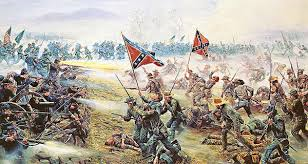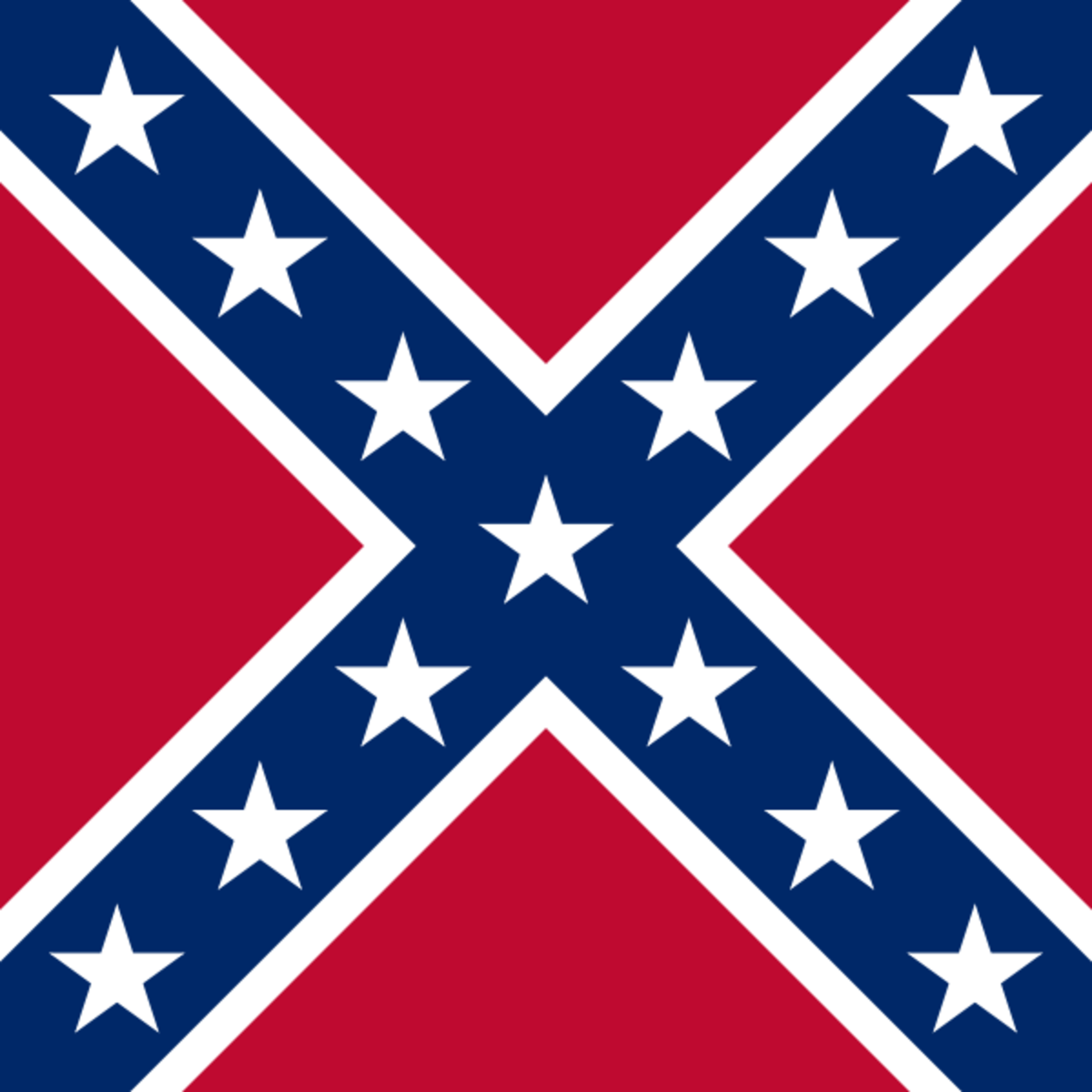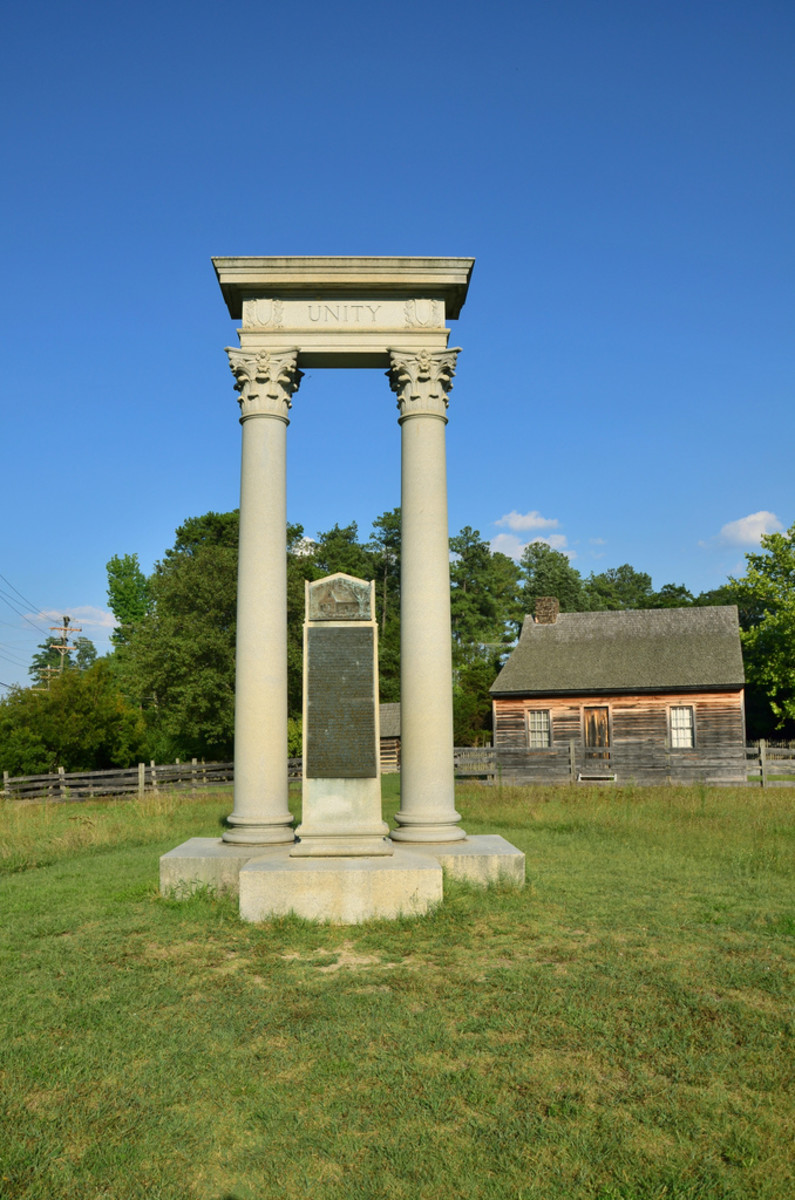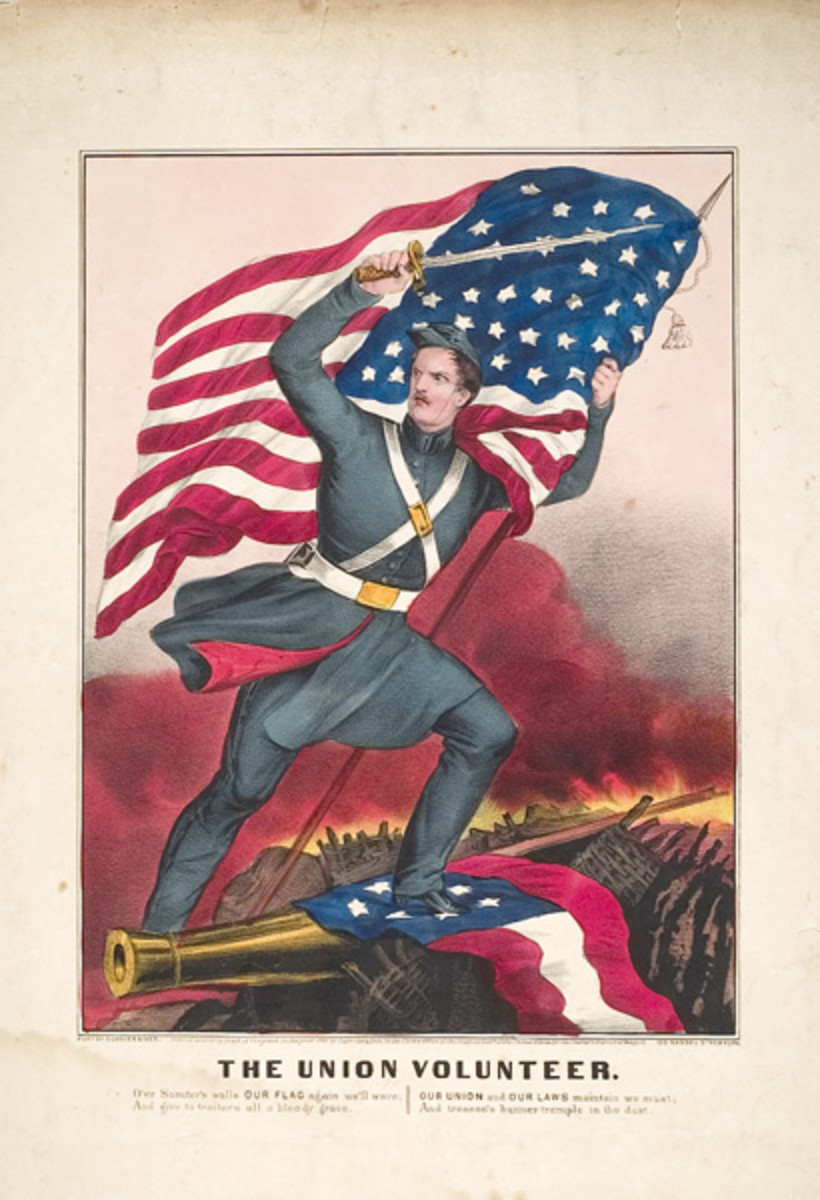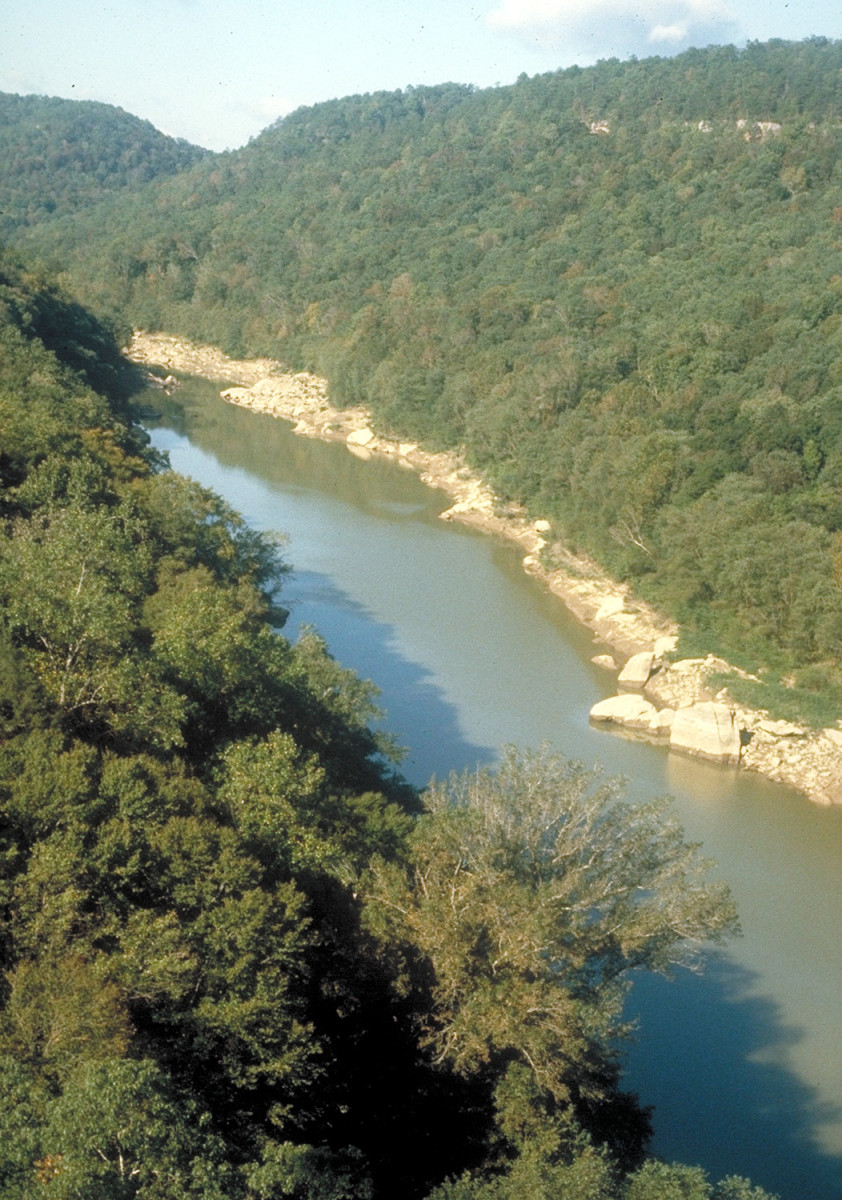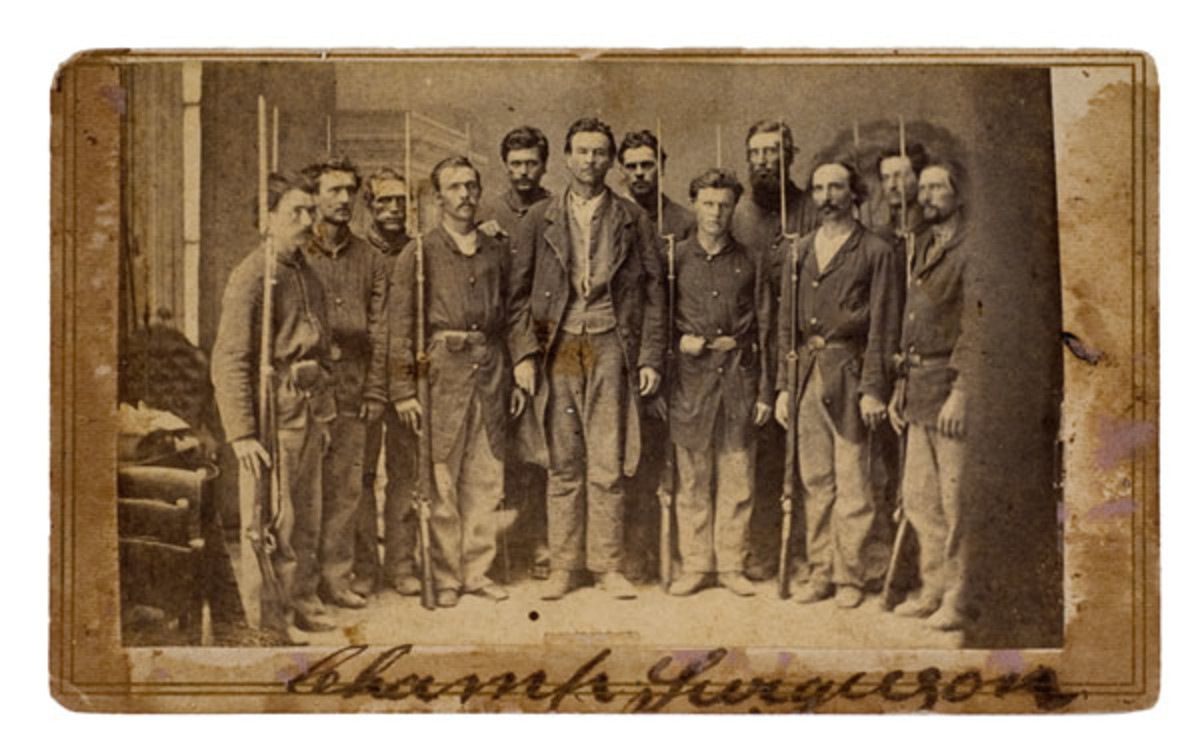- HubPages»
- Education and Science»
- History & Archaeology»
- History of the Americas»
- American History
General Pickett's Immortal Charge
Pickett’s Charge, July 3, 1863 -
By day three of the Battle of Gettysburg, General Robert E Lee had decided upon one of the most daring and ambitious maneuvers of this momentous fight. Day two had been most bloody, with intense fighting taking place between the armies as each tried to take or hold valued ground. The Peach Orchard, Little Round Top and Devil’s Den have been canonized in the annals of warfare as a result of the savagery displayed there.
Lee could not continue at this pace and decided that it would be best to launch a full scale attack on the center of the Union line. His hope was to break it in two, flank it, and then destroy it in a pincer move. Up to this point, Lee's army had consistently proven itself to be virtually invincible under his command. Now he would ask them to do the impossible.
Despite its grandeur, the plan was rather simple. The Confederates would open with a heavy artillery bombardment against the entrenched Union position. Then an assault force of about 15,000 men would march from a wooded area located on the west of Gettysburg. They would cross farm land about three quarters of a mile long, converging at a copse of trees located at the center of the Union line. Major General George Pickett’s Virginians would lead the assault, for his men had arrived only the night before and were the freshest. However, the assault force would be comprised of several units representing other Confederate states as well.
Not everyone within Lee’s ranks was on board with the plan. General James Longstreet, whom Lee referred to as his “war horse,” was reluctant to embrace it. Longstreet was a defensive strategist and knew what lay in store for the men who would cross that field. “It is my opinion,” he told Lee, “that no 15,000 men ever arrayed for battle can take that position.” Lee was unconvinced. His men had done the seemingly impossible before, and they could do it again. The attack would proceed as planned.
The Attack Begins
At 1:07 pm, the Rebel cannon barrage began. Volley after volley hurled shells at the Union line. Although it did have some effect, for the most part the Rebel guns overshot their target. Union soldiers lay prone on the ground, awaiting the Confederate onslaught. About 2:30 pm, Pickett asked Longstreet if he should advance. Longstreet, convinced the attack would fail, could not bring himself to verbally give consent. Instead, he only dropped his head and nodded.
Pickett called to his men, "Up, Men, and to your posts! Don't forget today that you are from Old Virginia." Slowly and en masse, the Confederates emerged from the wooded area and began moving east toward the Union position at Cemetery Ridge. Measuring almost a mile wide, the Rebel assault forces marched across the field with steeled resolve despite heavy fire from the Union cannons. Later, veterans from both sides of the conflict would say that the Confederate advance was one of the most impressive sights they had ever witnessed.
Crossing Into Hell on Earth
About midway across the field the Confederates came upon a fence row which had to be climbed in order to continue the assault. As they did so, Union rifles and cannons tore into their ranks with devastating effect. The attack staggered a bit, then regrouped and continued. Meanwhile, other Union troops continued lying on the ground, waiting. They had been ordered to hold their fire until given the order. When the Rebel advance was within 400 yards, the line had compressed to about a half mile wide. At this point the Union cannons began firing canister. Entire rows of Confederate soldiers perished. Still they marched, many now at the “quick-step.”
When the Rebels had approached to within 200 yards, the Union infantry finally heard the command to open fire. All at once the Federals arose from behind stone walls and fired their muskets in what seemed to be a single, thunderous explosion. Rebel dead fell by the hundreds. Still, they kept coming. Astonishingly, amid the deluge of Union guns the Rebels began to return fire. Now bluecoats began littering the ground as well. Over the next few moments, the 200 yards of battleground standing between the Confederate attack force and the Union line became ground zero for Hell on earth. It was no longer just a battle. It had become wholesale slaughter.
Finally, about 300 Virginians and Tennesseans breached the Union line. They were being led by Brigadier General Lewis Armistead, who, after reaching the initial Union position, ordered that the Yankee cannons be turned on the enemy. It would be Armistead’s last command, for a Union rifle felled him on the spot.
For a brief moment, Lee thought his men had actually broken through the Union entrenchment. In reality, this was only an illusion. Lacking reinforcements, the Confederates couldn’t hold the shallow penetration. The fighting around the stone wall was sheer butchery. Men in blue and gray fired at one another at point blank range, then used their muskets as clubs or bayonet spears. Most of the men who followed Armistead over the wall were killed or captured. The attack began to break off. Many Confederates retreated walking backwards so as not to be shot in the back, which could have been perceived as the death of a coward.
Aftermath
Seeing the attack had failed, Lee immediately rode out to meet his retreating army. “It’s all my fault,” he said to the battered men. Fearing a counter attack by Union forces, Lee attempted to rally his commanders to organize their units. When he told Pickett that he must see to his division, Pickett replied, “General Lee, I have no division.” In fact, his words were more than bitter resentment. Of the 40 field officers in Pickett’s division, 26 were casualties. Of his fifteen regimental commanders, six were killed and five were wounded. In all, estimates of the casualty rate for the assault force range from 40 to 50 per cent. On the Union side, about 1,500 men were killed in the charge, with many others wounded.
Pickett’s charge, more accurately known as the Pickett-Pettigrew-Trimble assault, is considered by historians as the “high water mark” of the Confederacy. Though Gettysburg may not have been the most decisive battle of the war, it nevertheless had far reaching implications. The South would no longer attempt to invade the North, and would be relegated to fighting a defensive strategy for the remainder of the conflict.
Pickett never forgave Lee for the failure at Gettysburg. According to one disputed account, after the war Pickett met briefly with Lee, an event observed by former Confederate Colonel John Mosby. Mosby recalled the meeting between the two as cold and reserved. Afterwards, Pickett commented to Mosby, “That old man destroyed my division.” To which Mosby replied, “Yes, but he made you immortal.” Whether or not this conversation actually occurred is irrelevant, for it certainly captures the sentiment of history.
Debates still swirl around the rationale of Lee’s decision to order Pickett’s charge, as well as the reasons for its failure. Lee himself always felt that had his orders and plan been followed explicitly, the attack would have succeeded. Pickett himself had no such misgivings. When asked on occasion why his attack failed, he often replied, “I’ve always thought the Yankees had something to do with it.”
For online readers and researchers desiring additional reading, these websites provide an excellent source of material:
www.civilwar.org/battlefields/gettysburg/maps/pickettscharge.html A detailed map outlining the famous assault.
www.encyclopediavirginia.org/pickett_s_charge An excellent synopsis sponsored by the Virginia Foundation for the Humanities.
For book readers, the following are very beneficial:
Gettysburg: The Last Invasion, by Allen C. Guelso.
Battle Cry of Freedom, by James McPherson. Though more comprehensive of the entire Civil War, McPherson does an excellent job in establishing a general background to Lee’s 1863 northern campaign.
